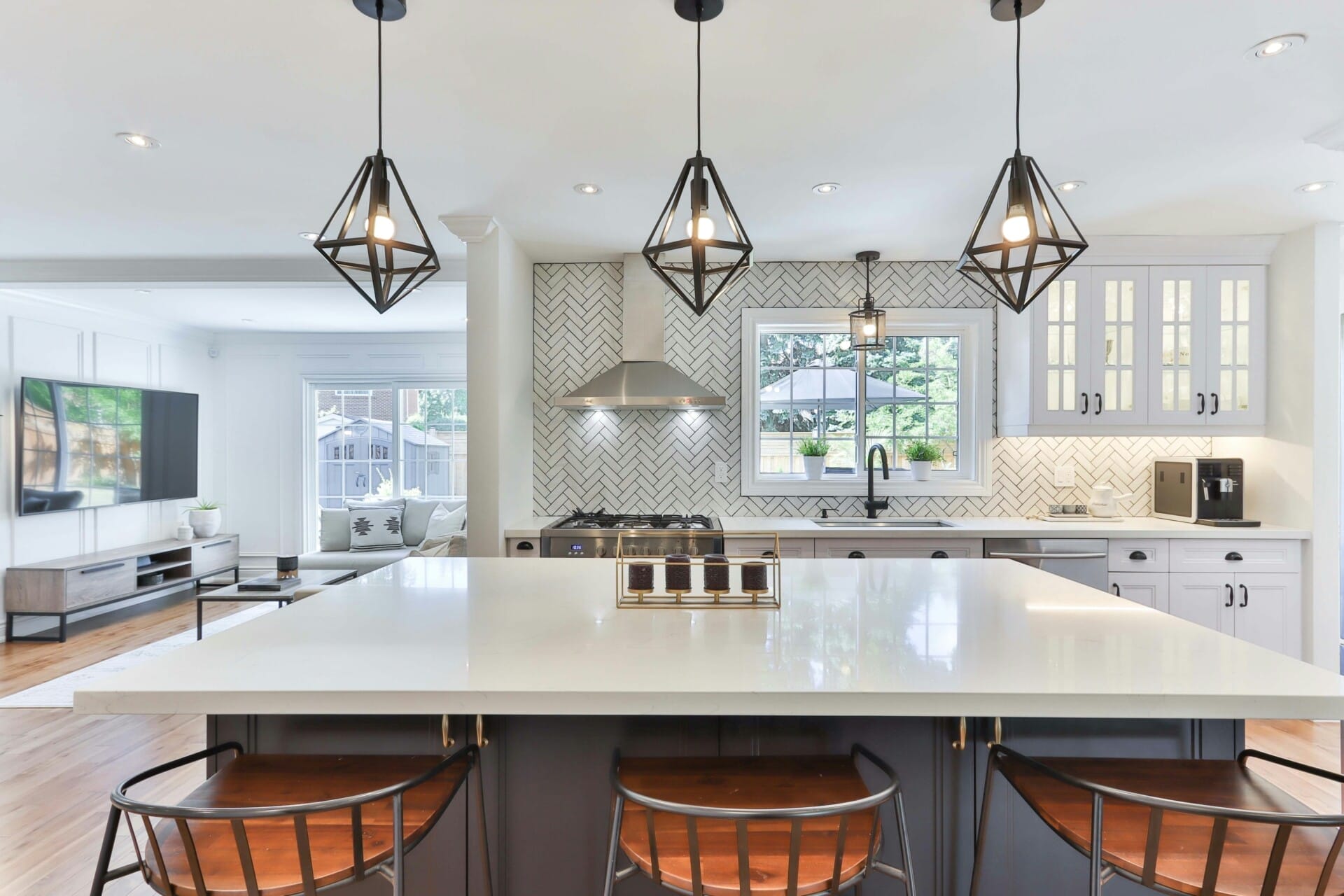Building a home is one of the most significant endeavors in life, a tangible manifestation of dreams, aspirations, and hard work. From the foundation to the roof, every choice made during the construction process will impact not only the aesthetics of the space but also its longevity, safety, and overall value. As trends in home design and construction evolve, so does the vast array of building materials available in the market. With so many options at hand, how do you discern which materials will stand the test of time without compromising on quality or design?
In this guide, we will navigate the intricate world of building materials, aiming to equip you with the knowledge necessary to make informed decisions for your home. We will explore the importance of selecting high-quality components that contribute to durability and sustainability, delve into the characteristics that define superior materials, and highlight the critical role they play in safeguarding your investment. Whether you’re embarking on new construction or considering renovations, understanding the nuances of various materials will empower you to create a space that not only meets your aesthetic desires but also endures the trials of time and the elements.
Join us as we unravel the essential factors to consider when choosing building materials, providing you with actionable insights that can lead to a home built to last for generations. With the right approach, your home can be more than just a shelter—it can become a lasting legacy, a sanctuary where memories are forged and cherished.
Understanding Material Lifespans and Their Impact on Home Durability
When constructing a home, understanding the lifespan of various materials is crucial for ensuring long-term durability. Different building materials have unique characteristics that directly influence their resilience against environmental factors such as moisture, temperature fluctuations, and wear over time. For instance, materials like brick and concrete are renowned for their sturdiness, often lasting several decades with minimal maintenance. Conversely, materials such as wood or drywall may require more frequent repairs or replacements due to susceptibility to rot or damage from pests.
Choosing materials with a longer lifespan can lead to significant cost savings in the long term. Investing in high-quality roofing materials, for example, can reduce the frequency of replacements and repairs, ultimately safeguarding your home from potential water damage. When evaluating material choices, consider these factors:
- Environmental Resistance: How well does the material withstand weather conditions?
- Maintenance Requirements: What level of upkeep is needed to prolong the lifespan?
- Energy Efficiency: Does the material contribute to better insulation and lower energy bills?
The table below summarizes the average lifespans of common building materials, offering a quick reference to aid in decision-making:
| Material | Average Lifespan |
|---|---|
| Brick | 70-100 years |
| Concrete | 50-100 years |
| Wood (treated) | 20-30 years |
| Drywall | 30-60 years |
By prioritizing materials with proven durability, homeowners can create spaces that not only look beautiful but also stand the test of time. When selecting materials, it’s vital to consider both the initial costs and the potential need for future replacements, as these factors contribute to the overall sustainability and economic viability of a home. The goal should be to balance aesthetics, functionality, and longevity to ensure a durable residence for years to come.

Evaluating Environmental Impact and Sustainability for Long-Term Benefits
In the quest for a durable home, assessing the environmental impact of building materials is essential. Choosing materials with a low carbon footprint not only contributes to a healthier planet but also helps reduce future renovation costs. Prioritizing materials that are sustainably sourced, recycled, or renewable can significantly decrease the environmental toll of construction, ensuring that your home remains resilient both structurally and ecologically.
To truly gauge the sustainability of a building material, consider the following factors:
- Life Cycle Assessment: Evaluate the entire lifespan of the material, from extraction to disposal. A material’s sustainability hinges on its performance throughout each phase.
- Energy Efficiency: Opt for materials that help in energy conservation. Insulative materials or those that reflect heat can lead to long-term savings on energy bills.
- Local Sourcing: Choose materials sourced locally to minimize transportation emissions. This not only supports local economies but also reduces the carbon footprint associated with long-distance shipping.
It’s beneficial to compile a comparison of various materials based on their sustainability metrics. Below is a simple overview of commonly used building materials:
| Material | Recyclable | Local Sourcing | Energy Efficiency |
|---|---|---|---|
| Wood | Yes | High | Good |
| Concrete | Partial | Moderate | Fair |
| Steel | Yes | Moderate | Excellent |
| Brick | Yes | High | Fair |
By examining these elements, homeowners can make informed decisions that align with both their practical needs and environmental values. The interplay between durability and sustainability is crucial for modern construction, as the choices made today will ripple into future generations, shaping an eco-friendly legacy.

Exploring Cost-Effectiveness: Balancing Quality and Budget
When embarking on the journey of home construction or renovation, the decisions surrounding building materials significantly impact both your budget and the overall quality of your dwelling. Finding the right balance between cost and durability often feels daunting. To begin, consider employing a systematic approach to evaluating materials. Compare options based on durability, aesthetics, and environmental impact—this holistic perspective allows you to identify materials that not only fit within your budget but also ensure longevity and minimal maintenance over time.
Utilizing materials known for their sustainability and strength can lead to substantial savings in the long run. For instance, energy-efficient windows or insulated siding might seem like a larger upfront expense, but they contribute to lowering utility bills and enhancing comfort. Additionally, they often come with warranties that ensure protection against defects. To streamline your decision-making, consider compiling a list of potential materials alongside their benefits and costs:
| Material | Benefits | Approx. Cost |
|---|---|---|
| Fiberglass Insulation | Energy-efficient, sound-proofing | $$ |
| Composite Decking | Durable, low maintenance | $$$ |
| Ceramic Tiles | Water-resistant, stylish | $$ |
| Steel Roofing | Longevity, energy-efficient | $$$$ |
Furthermore, it is essential to research local suppliers and contractors who prioritize quality craftsmanship and ethical sourcing. Building relationships with professionals who understand material performance can provide invaluable insights, ensuring you are not only choosing the best materials for your home but also making informed financial decisions. Prioritize long-term value over short-term savings, and embrace the idea that investing in quality materials today will pay dividends in avoided repairs and replacements down the line.

Essential Features to Look for in Building Materials for Resilience
When selecting building materials for optimal resilience, it is crucial to focus on several key attributes. Durability is paramount; materials should withstand both natural wear and environmental stressors without compromising structural integrity. Look for products that have been tested under extreme conditions, as they are likely to perform better over time. Sustainability is also a significant consideration; using eco-friendly materials can enhance the longevity of a structure while minimizing its environmental footprint.
Furthermore, moisture resistance is essential in regions prone to heavy rainfall or humidity. Materials that resist water infiltration will not only protect the structure but also prevent mold growth and deterioration. Ensure that the chosen materials have adequate sealing or waterproofing capabilities. Additionally, consider thermal performance; well-insulated materials contribute to energy efficiency and stability in temperature fluctuations, further enhancing the home’s resilience against climate change.
Lastly, ease of maintenance cannot be overlooked. Resilient materials often require minimal upkeep, reducing costs and labor over time. Choosing products with strong warranties can also indicate reliability; these assurances reflect a manufacturer’s confidence in their products’ longevity. To help visualize these essential characteristics, the table below summarizes compatible building materials along with their resilience features:
| Material | Durability | Sustainability | Moisture Resistance |
|---|---|---|---|
| Steel | High | Recyclable | Excellent |
| Brick | High | Natural clay | Good |
| Concrete | Very High | Can use recycled aggregates | Moderate |
| Composite Wood | Good | Recycled materials | Varies |
Q&A
Q&A: A Guide to Choosing Quality Building Materials for a Durable Home
Q1: Why is it important to choose quality building materials for a home?
A1: Choosing quality building materials is crucial for ensuring the longevity and durability of your home. High-quality materials offer better resistance to weather elements, pests, and general wear and tear, ultimately saving you money on repairs and maintenance in the long run. Additionally, they contribute to energy efficiency, leading to lower utility bills.
Q2: What factors should I consider when selecting building materials?
A2: Several factors come into play when selecting building materials, including climate, budget, purpose of the space, and aesthetic considerations. It’s essential to evaluate the local environment—such as humidity, temperatures, and common natural disasters—to choose materials that can withstand local conditions. Additionally, consider your budget and whether the long-term benefits of higher-quality materials justify the initial investment.
Q3: Are all building materials created equal?
A3: No, not all building materials are equal. Quality can vary significantly between brands and types. Researching and comparing materials—not only their durability but also their source, certifications, and user reviews—can provide valuable insights. Look for materials that have been tried-and-true in similar applications and locales to ensure their performance.
Q4: What types of materials should I prioritize for external versus internal construction?
A4: For external construction, prioritize materials that are weather-resistant and durable, such as fiber-cement siding, treated wood, and metal roofing. These materials help protect against moisture, rot, and UV damage. For internal construction, focus on materials that enhance comfort and aesthetics, such as high-quality drywall, flooring options with moisture resistance, and sustainable insulation materials.
Q5: How do sustainability considerations affect my choice of building materials?
A5: Sustainability is becoming increasingly crucial in construction. Choosing eco-friendly materials—such as reclaimed wood, bamboo, or recycled steel—can minimize environmental impact. These materials often come with the added benefits of energy efficiency and health safety, contributing to a healthier living environment. Sustainable choices can also enhance your home’s resale value, appealing to the growing market of eco-conscious buyers.
Q6: Can I save money by choosing cheaper building materials upfront?
A6: While opting for cheaper building materials may save you money initially, this approach can lead to higher costs over time due to increased maintenance, repairs, and replacements. Quality materials typically have a higher upfront cost but often result in significant savings in durability and efficiency. It’s vital to look at the long-term value rather than just the initial price.
Q7: How do I ensure the materials I choose are safe and non-toxic?
A7: To ensure safety and non-toxicity, look for certifications that indicate low emissions and eco-friendliness, such as GREENGUARD or Cradle to Cradle. Research the composition of materials, particularly paints, adhesives, and finishes, to avoid harmful chemicals like VOCs (Volatile Organic Compounds). Consultation with professionals or building specialists can also help you make informed decisions about safe materials.
Q8: What is the role of a contractor in selecting building materials?
A8: A knowledgeable contractor can be an invaluable resource in selecting quality building materials. They can provide insights into the best options for your specific project, help you navigate supply chains, and connect you with trusted suppliers. Their experience allows them to offer recommendations based on previous projects and common pitfalls to avoid, ensuring that your choices align with both your budget and design vision.
Q9: How can I keep up with trends in building materials?
A9: Staying current with trends in building materials can be as simple as subscribing to industry magazines, attending trade shows, or following building and design blogs. Online platforms and social media can also serve as valuable resources for discovering innovative materials and technologies. Engaging with professionals in the field can provide further insights, allowing you to integrate modern trends into your project while maintaining a focus on quality.
In Retrospect
As we conclude our exploration of selecting quality building materials for a durable home, remember that the choices you make today lay the foundation for your future. Investing time and careful consideration into the materials you choose not only enhances the longevity and resilience of your home but also reflects your personal values and commitment to sustainability. From the strength of steel to the warmth of timber, every element contributes to the story of your dwelling.
In a world where options abound, let knowledge guide you. Embrace the art of discerning quality from the ordinary, ensuring that your selections are not merely functional but also harmoniously integrated into your vision of home. As you embark on your building journey, we hope this guide serves as a reliable compass, empowering you to create a space that stands the test of time—both in structure and in spirit. Your home awaits its masterpiece; choose wisely, and may it be a sanctuary that brings you peace for years to come.


